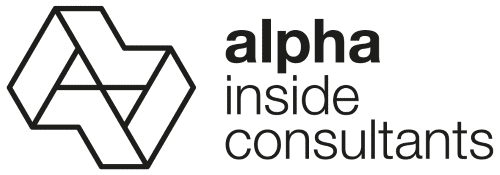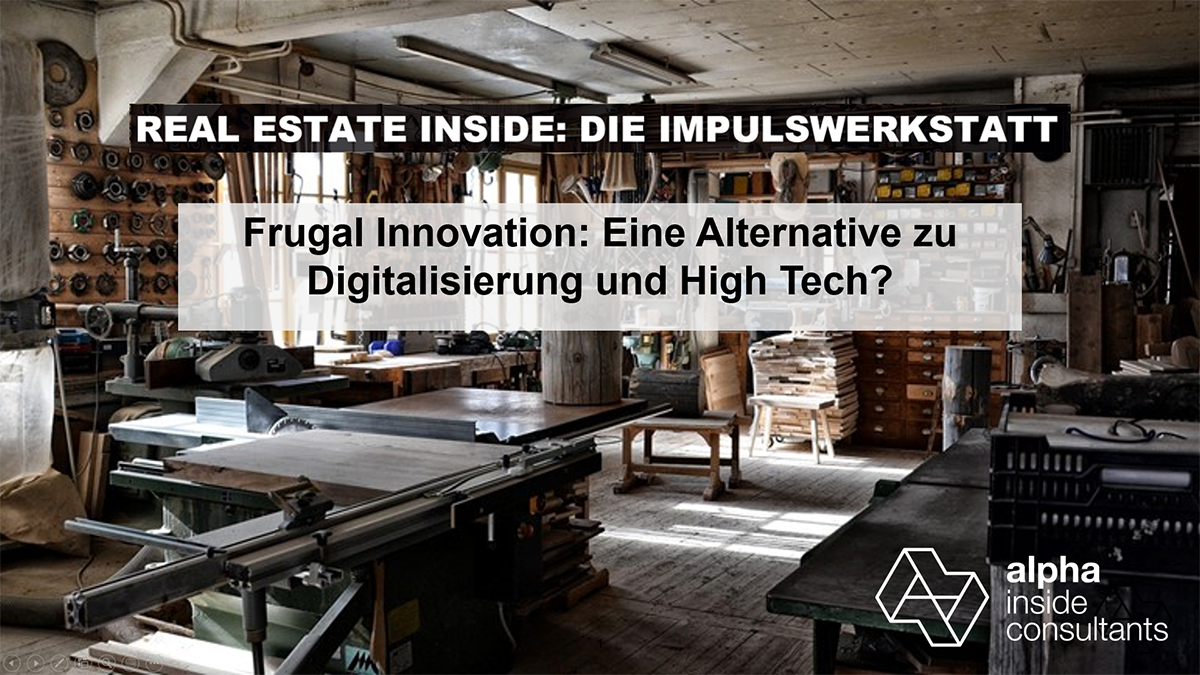Our second digital impulse workshop took place on 20.05.2021, this time on the topic of "Frugal Innovation".
Anyone who knows us knows that the name of the impulse workshop was not chosen at random. This format is intended to provide a space for inspiration, collaborative design and networking. The event thus creates a framework for discussing current topics from the real estate world and society.
But what is Frugal Innovation actually about? Digitalization has become an integral part of the real estate industry, and "smart building" currently seems to be the concept of the future for buildings. At this point, we wondered whether the term "smart" could be used in a different way. Wouldn't "less is more" also be appropriate here? Can combinations be derived from these seemingly contradictory concepts that are perhaps really "smart"?
We were delighted with the exciting keynote speeches by Liza Wohlfahrt (Fraunhofer IAO), Prof. Elisabeth Endres (TU Braunschweig) and Johannes Nussbaum (Art-Invest Real Estate).
As a research assistant in the field of research and consulting for frugal innovation, Liza Wohlfahrt deals intensively with this topic on a daily basis. She gave us an insight into her current projects, which illustrate the frugal innovation approach. For example, a project in Asia in which a harvesting machine manufacturer is producing a smaller harvesting machine to make it easier for farmers to work in the rice fields. At this point, it was important to maintain high quality and minimize factors that cause unnecessary costs. After all, the driver's cab could be air-conditioned, but in this case, isn't the roof enough to protect it from the sun as an essential element? Another example is a smartphone manufacturer from Austria that produces special cell phones for senior citizens that are equipped with all the important tools and additional features such as an emergency call button, but at the same time are less complex in terms of menu navigation and have a robust design while remaining affordable.
Frugal innovation or how little is enough and in what context are we discussing this topic in relation to the construction industry? The decisive factor is that the construction and operation of buildings account for around 40% of CO₂ emissions and 90% of mineral renewable raw materials in the production of building materials. In her presentation, Prof. Endres showed us the latest findings from her current projects in the field of building technology. As a result of ongoing technical innovations, we can consider how much technology we really need in buildings and how it is integrated. Low-tech is not no-tech, but the aim should be to work out a robust operating optimum. In doing so, architecture must also be brought back into focus.
Johannes Nussbaum once again stirred up controversy at the end, although it quickly became apparent that he uses the same methods to define goals in the area of digitalization as Ms Wohlfahrt does with frugal innovation, for example.
How networked does the building need to be? And more importantly, how networked do the individual trades need to be with each other? Instead of continuing to view the technology in silos, the individual systems should be interconnected in future. This is the only way we can make digital building automation work for us and derive real benefits from the numerous data collected in order to improve user comfort and reduce costs. Not omitting the technology, but simply dealing with it differently and looking at it with a sense of proportion makes a building smart and at the same time shows some references to the two previous impulses.
In summary, this was a great event that certainly gave some people food for thought. We would therefore like to thank all participants and those involved once again for the lively exchange.
We are already looking forward to the next impulse workshop, which is planned for the beginning of fall 2021 and will be dedicated to the topic "Neighborhoods of the future".



